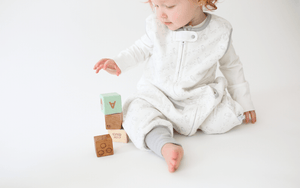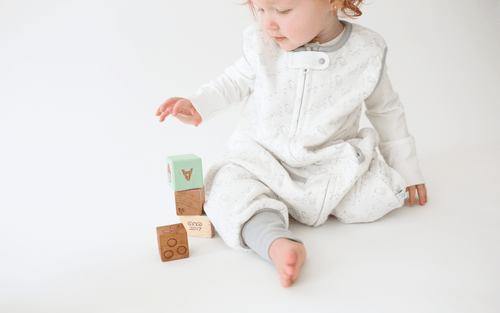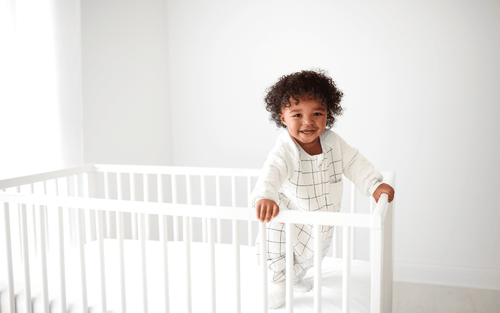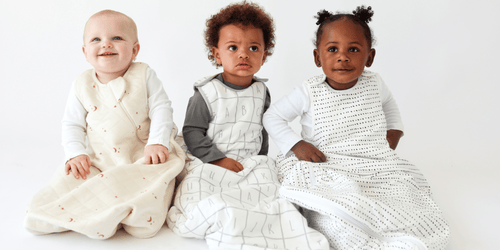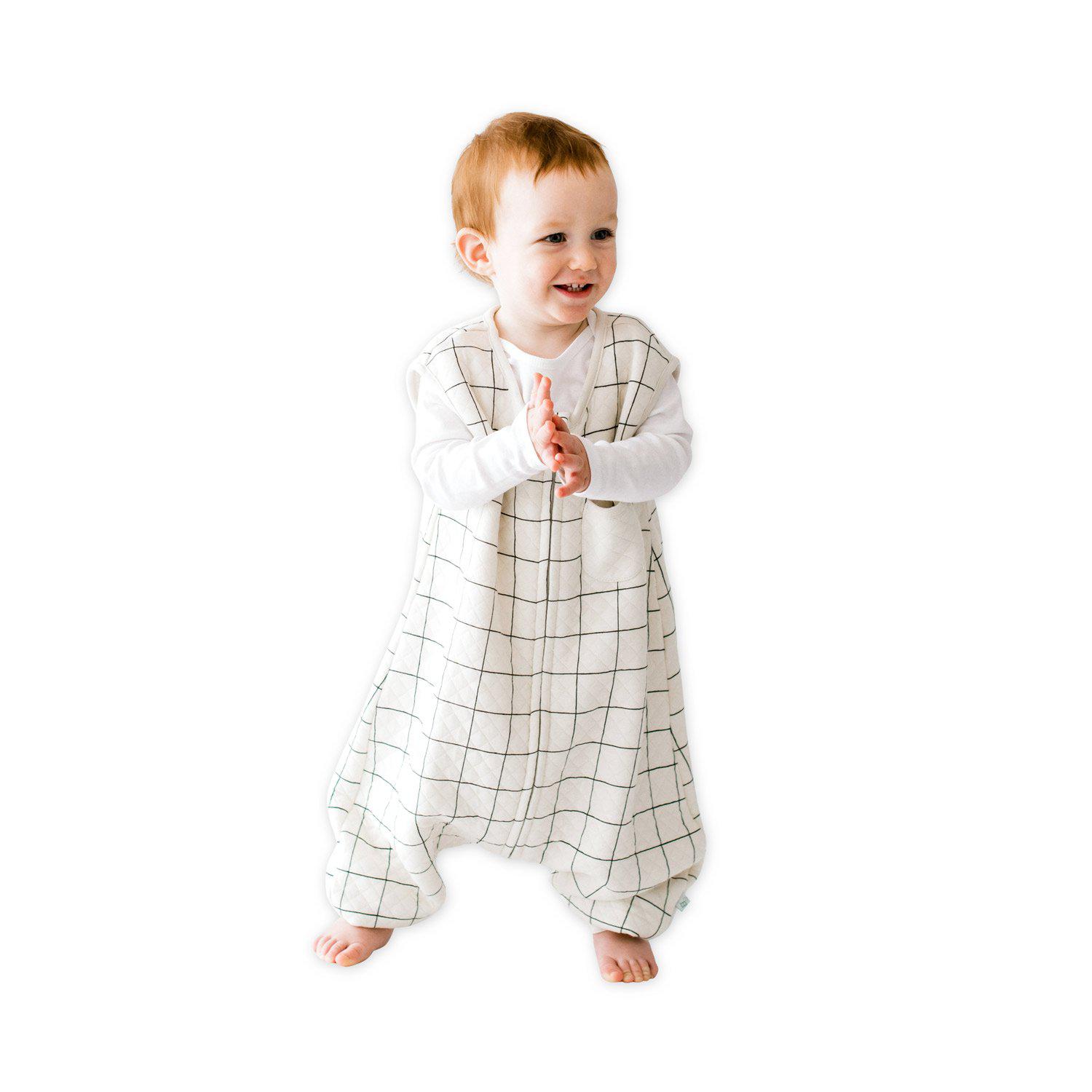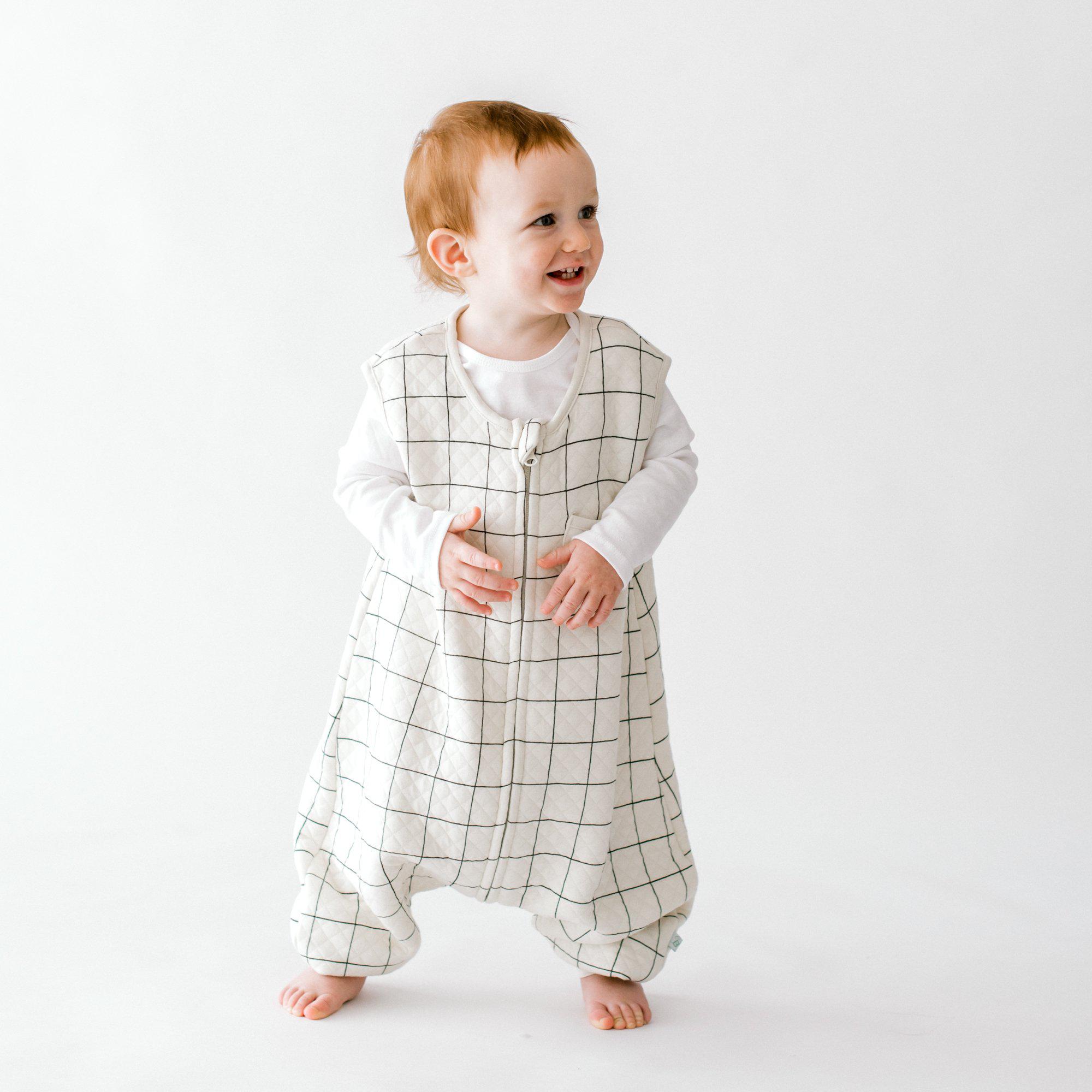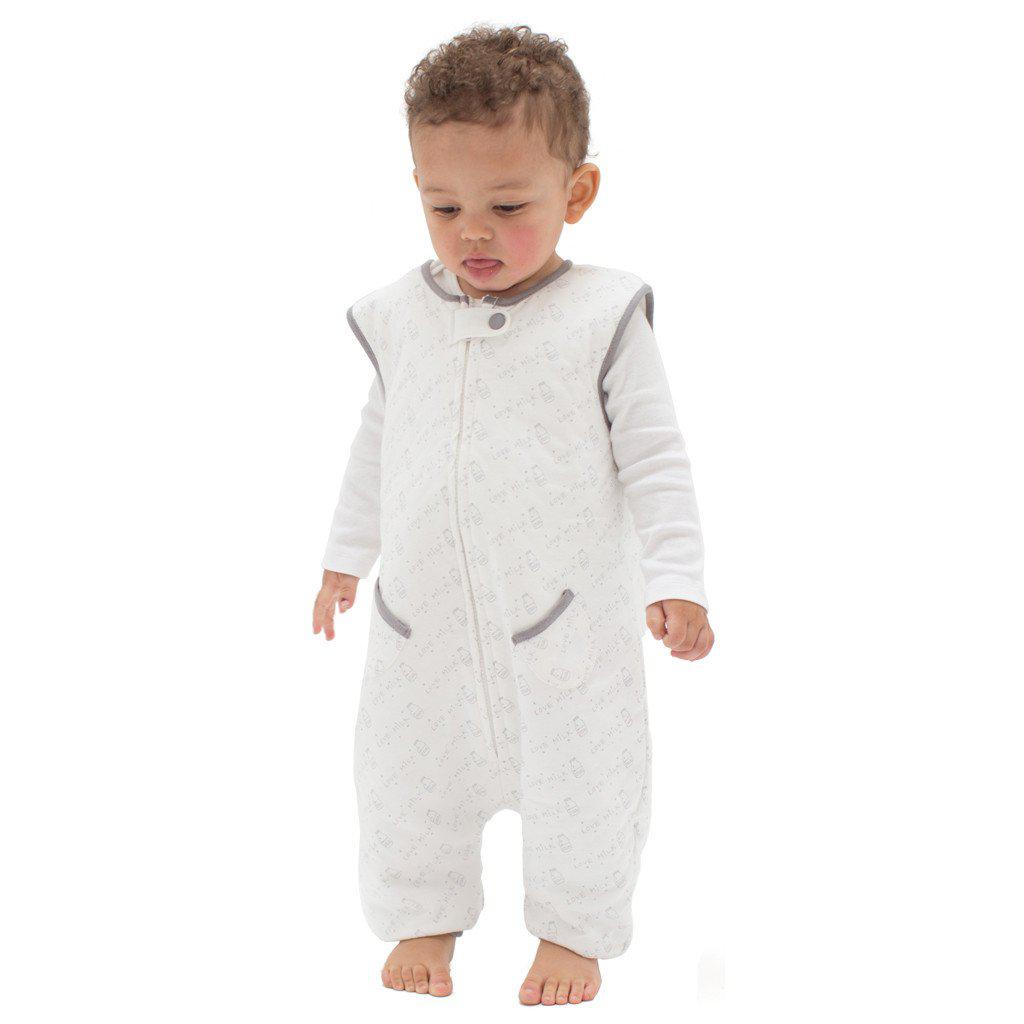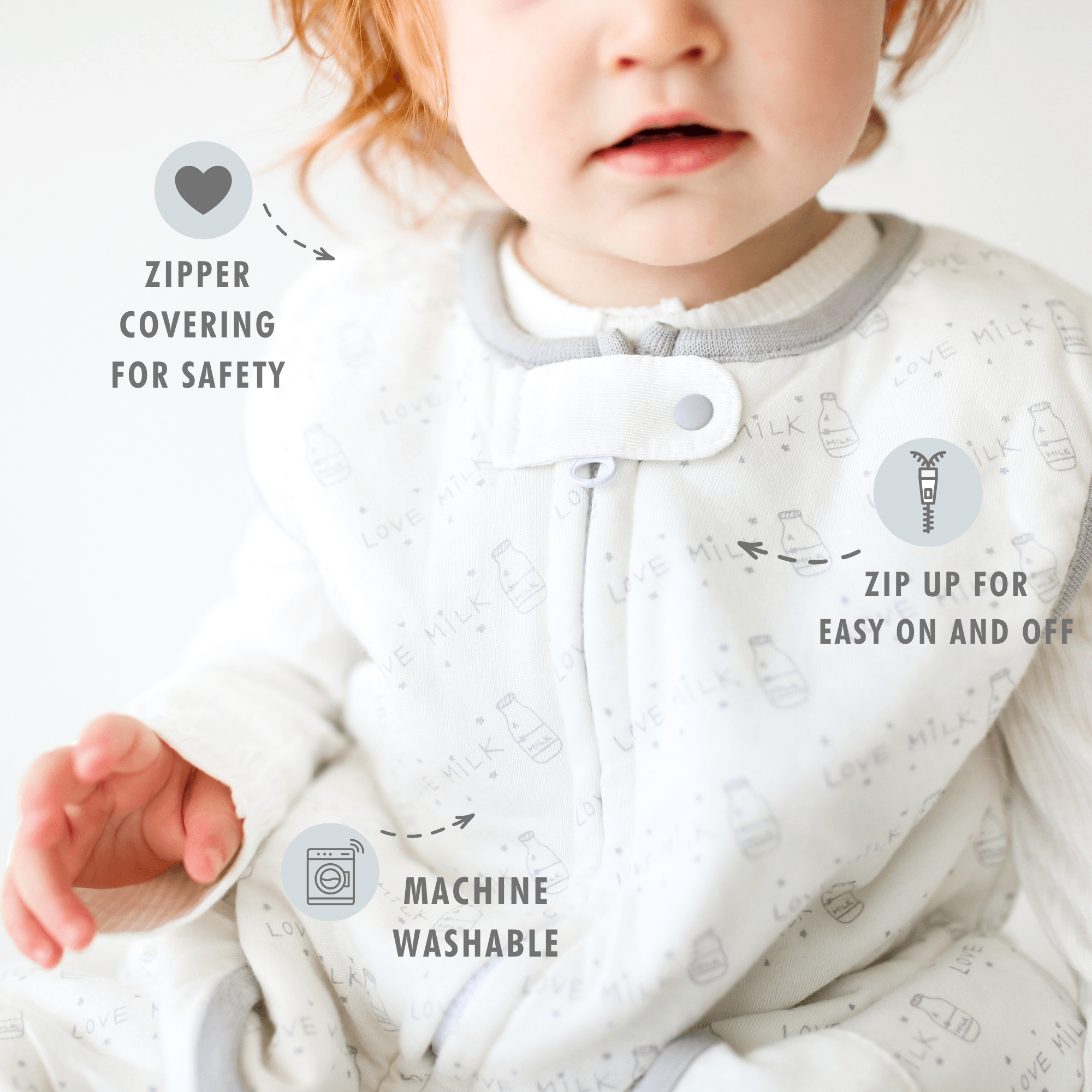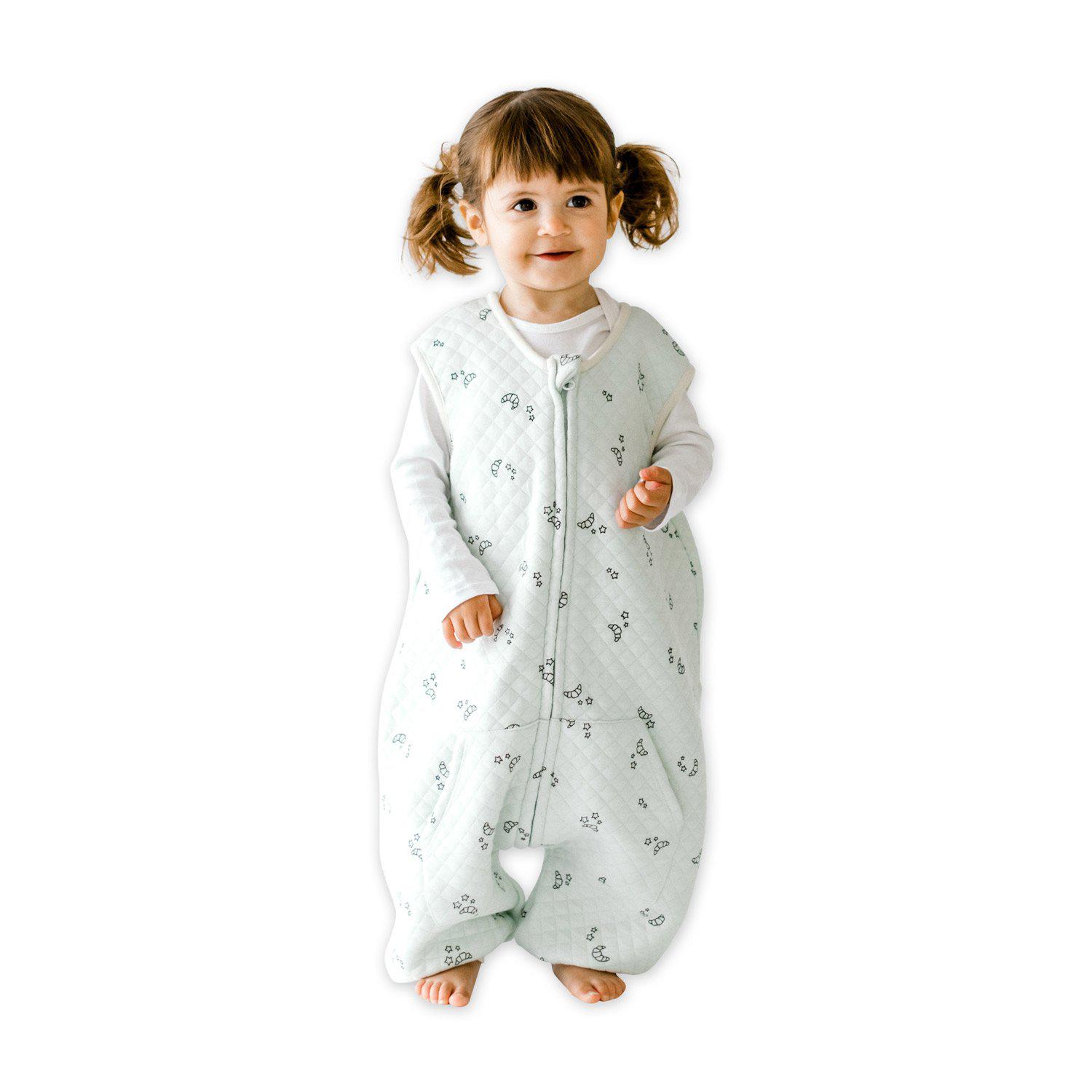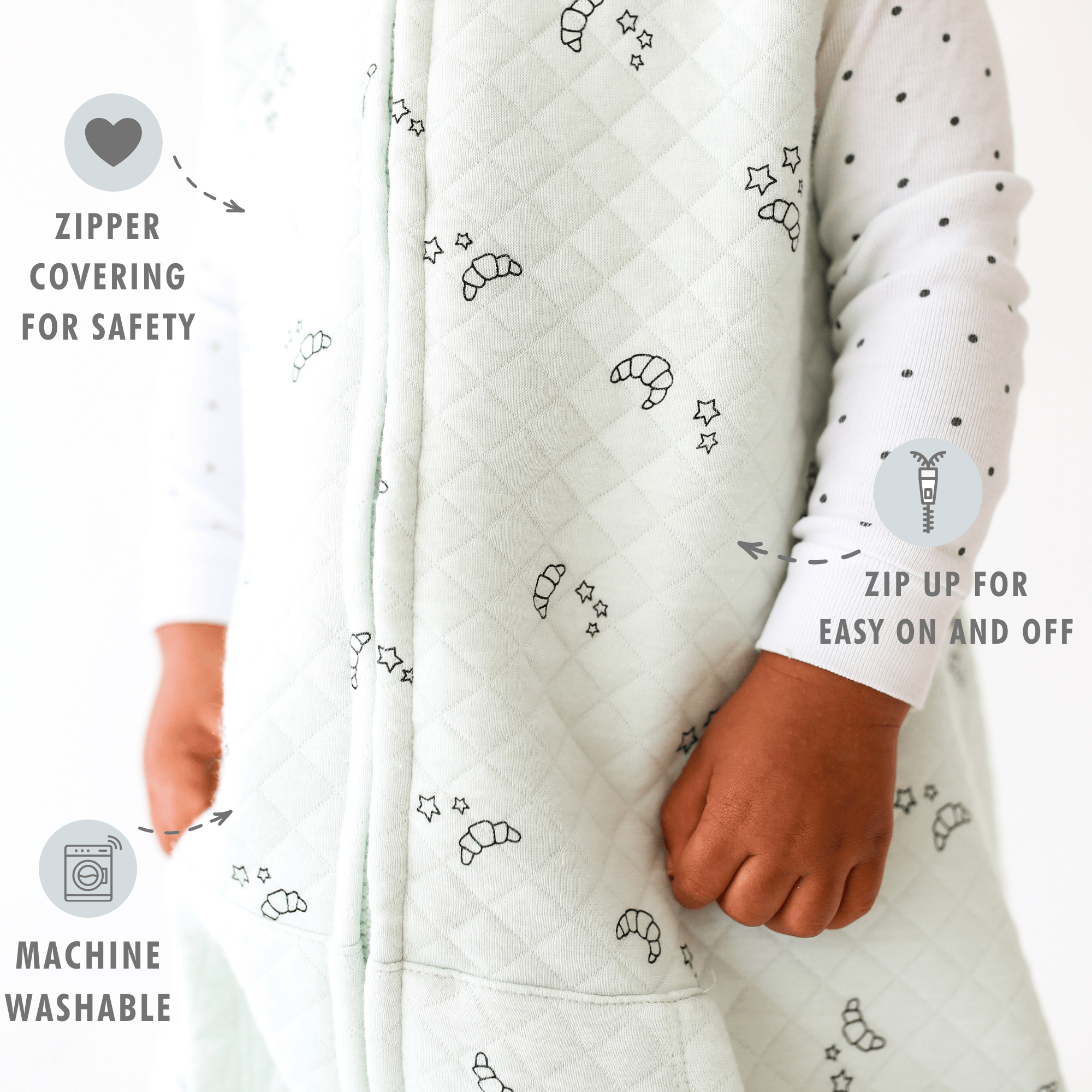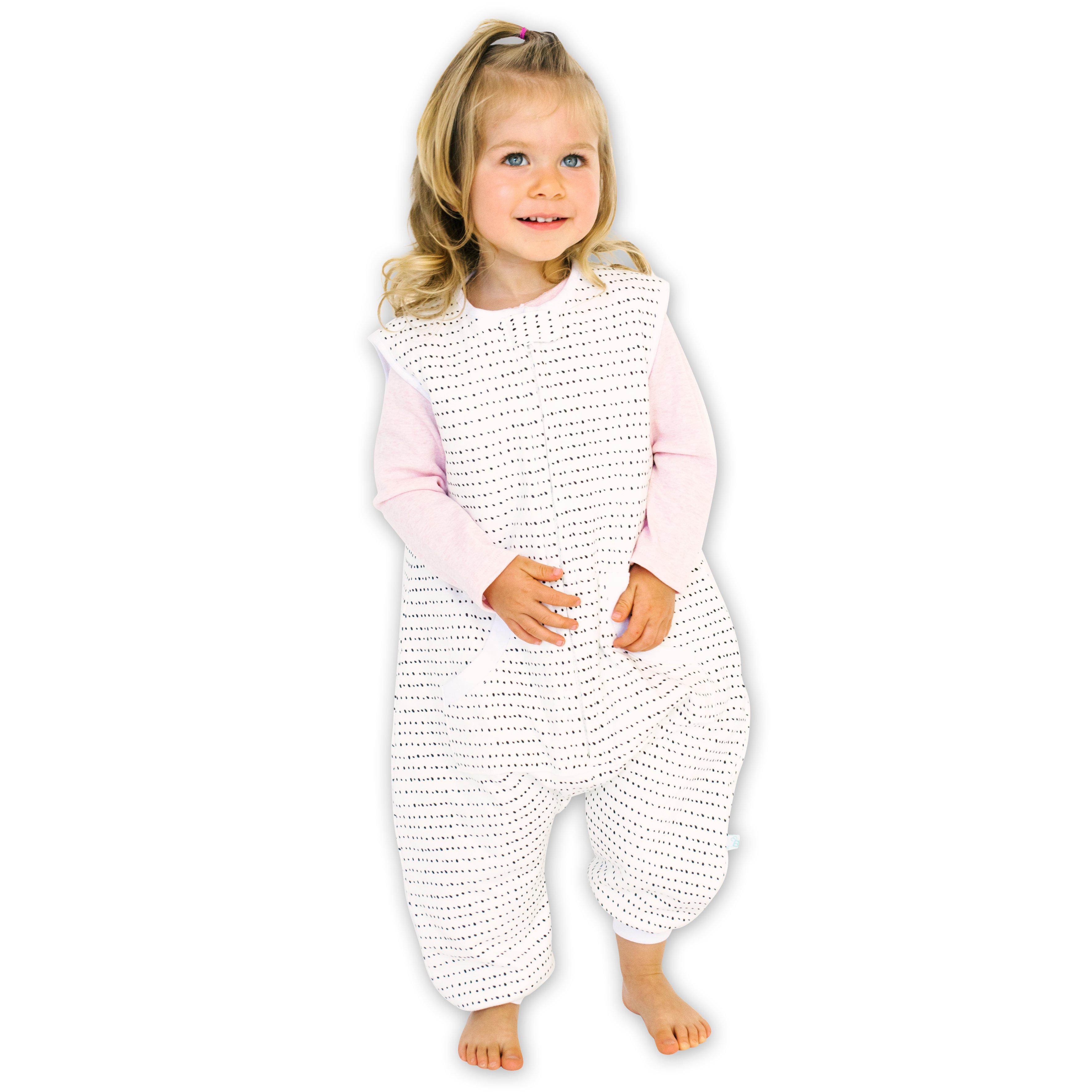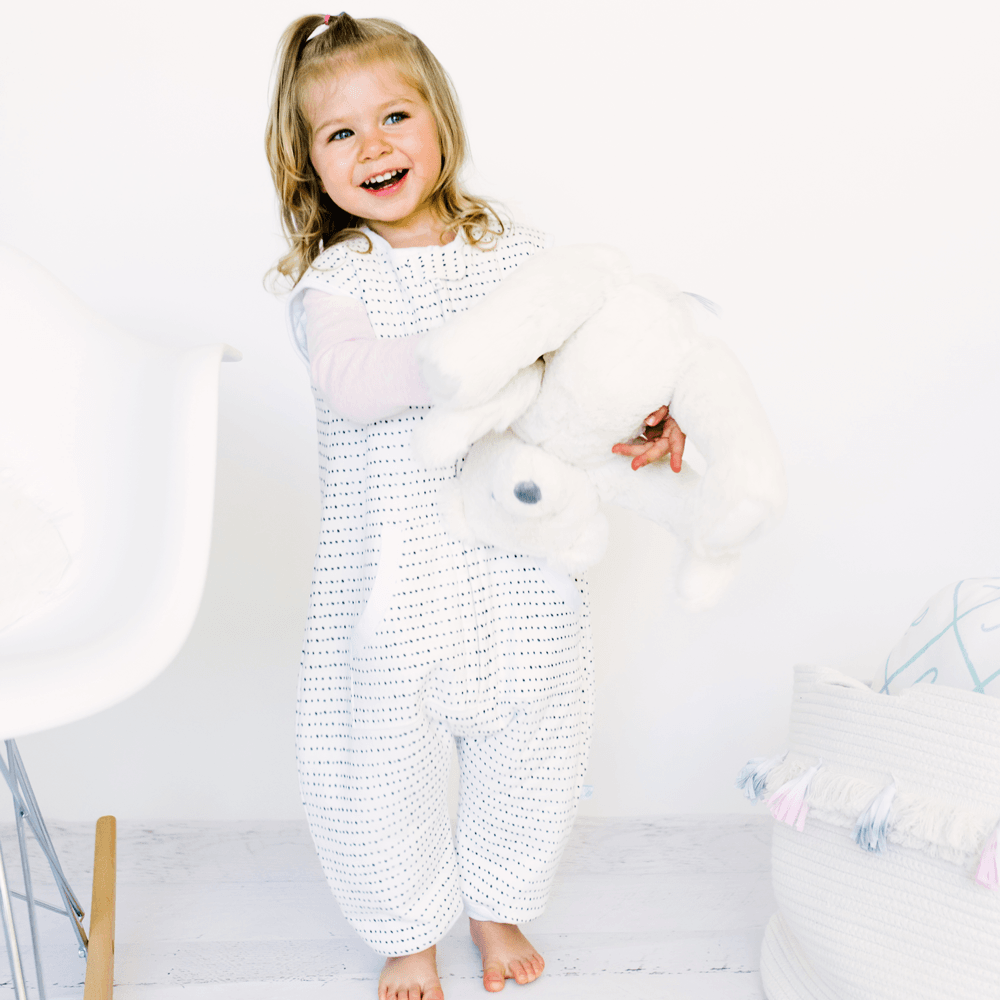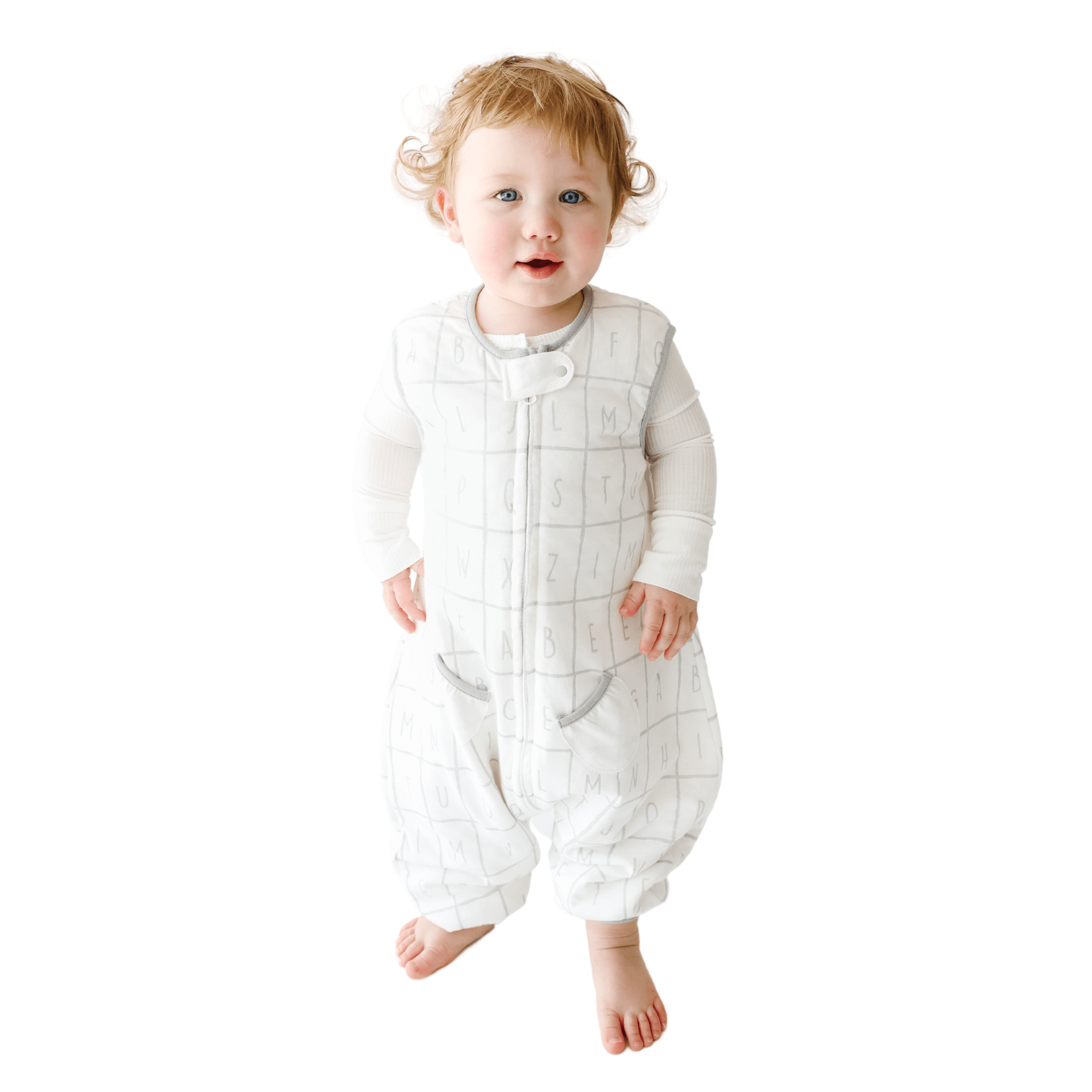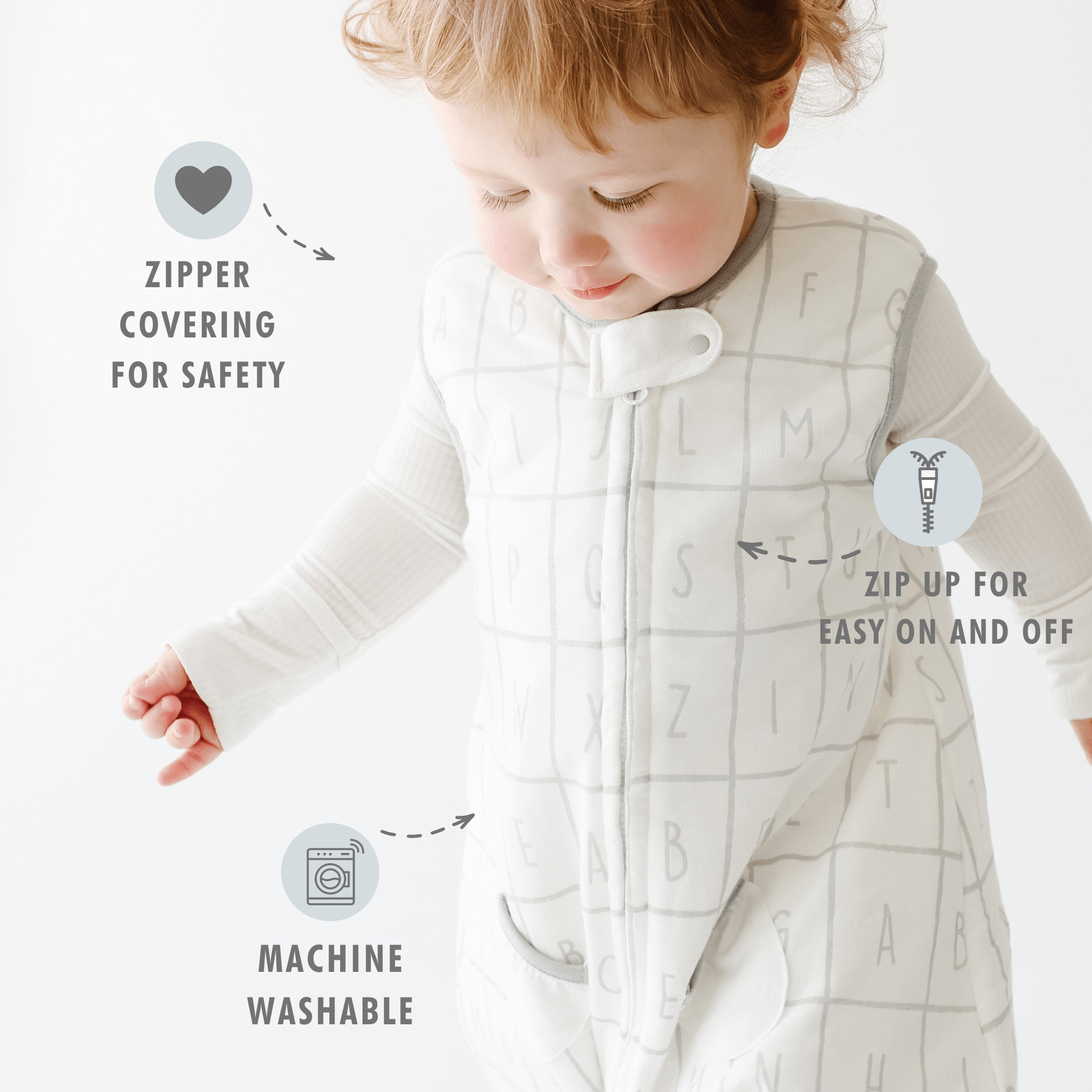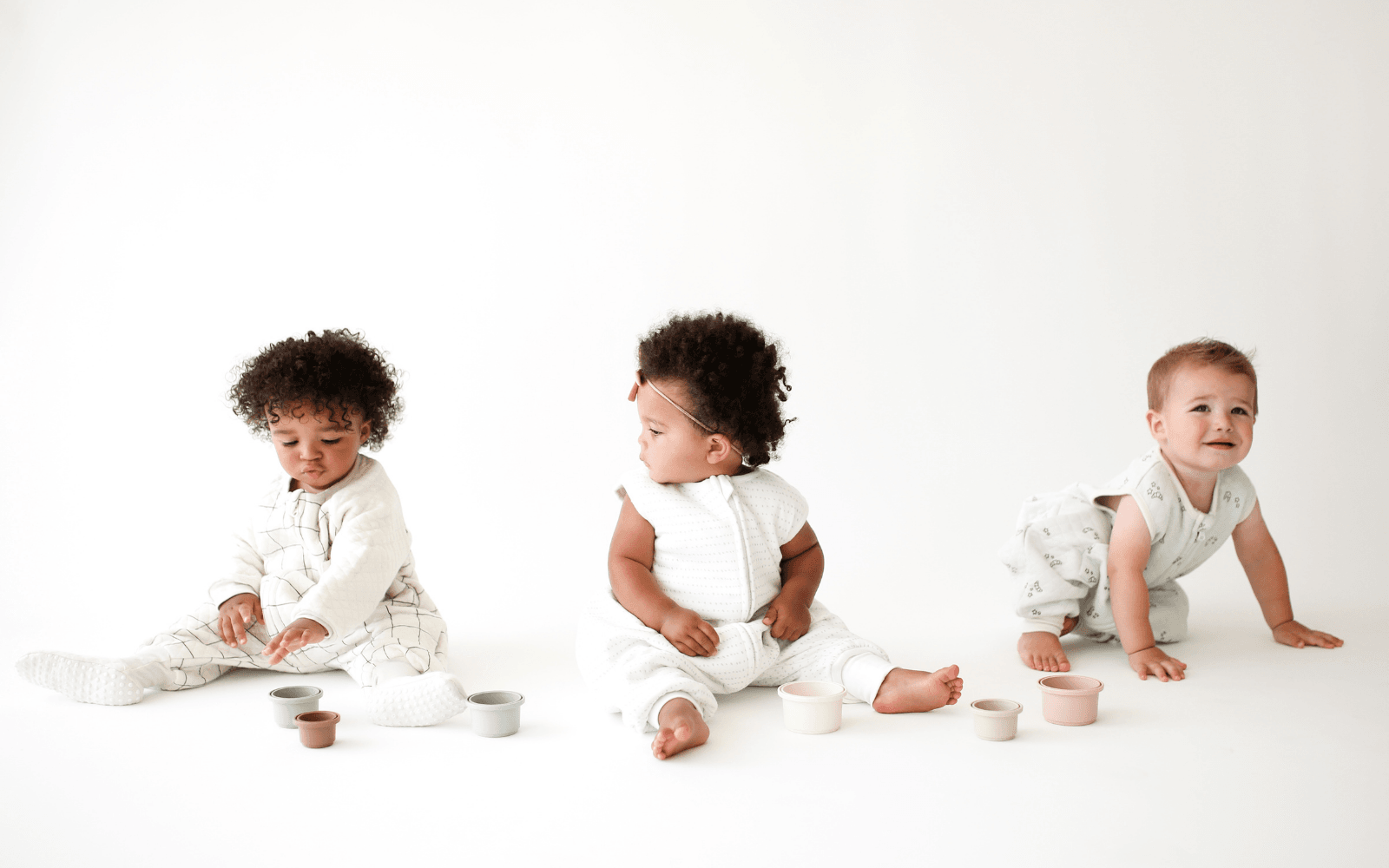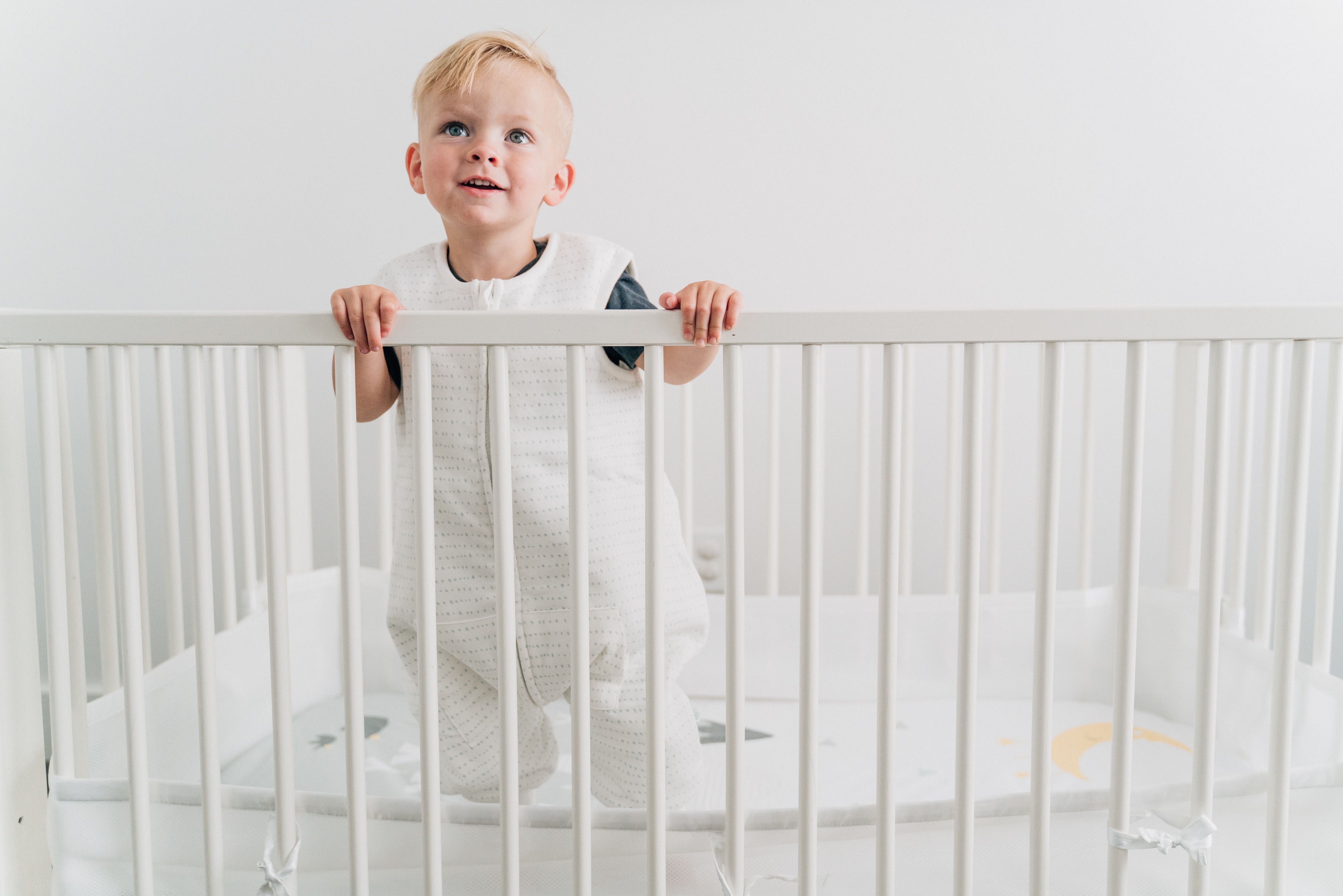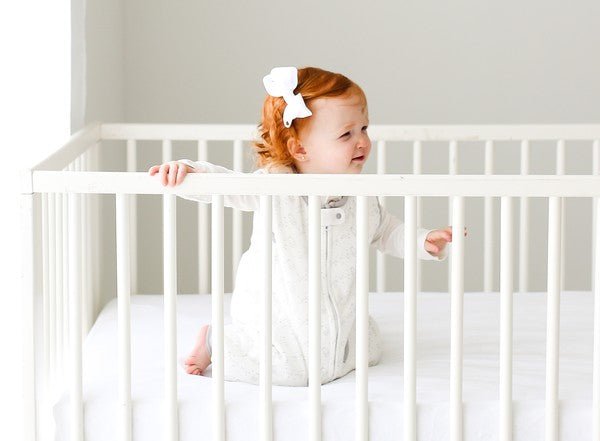The Top 4 Reasons a Sleep Sack can Help Your Toddler Sleep Better
Guest contribution written by: Bonnie Dimmick founder of Sleep Love and Happiness
You hear a lot about sleep sacks for young babies, but a question that comes up frequently is ‘when should my baby or toddler stop wearing a sleep sack?’
The answer may surprise you.
Keeping babies in their sleep sacks into toddlerhood can actually help improve sleep!
Before we get into the why’s of this, let’s start with the basics.
What is a sleep sack?
A sleep sack is basically a blanket that kids can wear. It is a comfortable outer layer that can go on over pajamas or a onesie. It serves as a blanket for babies and young toddlers for whom it is either not safe to have a blanket in the crib or they cannot keep or don’t want a blanket on.
You may be questioning how this could possibly help a toddler actually sleep better so let’s get to it.
Here are 4 reasons a sleep sack can help your baby and toddler sleep better:
1. A sleep sack can be a sleep cue
Putting on a sleep sack can serve as a sleep cue for toddlers. A sleep cue is when their brains and bodies learn that certain actions, sensations or sounds mean that the transition to sleep is coming. Then it allows them to fall asleep more easily.
You want to put your toddler’s sleep sack on at the same part of their bedtime routine every night. Then they get warm and cozy at the same part of the routine so those sensations coupled with the rest of the routine trigger in their brain that sleep is coming. Consistency in the bedtime routine is key to establish these sleep cues.
2. Sleep sacks keep toddlers warm
Sleep sacks also help keep babies and toddlers warm. Being cold is a common reason for early morning wake ups because our body temperatures are at the lowest point in the 4:00-5:00 AM range. Having the extra layer of the sleep sack helps kids feel warm while they sleep. And since 5:00 AM is not morning in my book, ensuring that being too chilly is not a reason for my toddler to start the day at that time is a must.
Make sure to check the TOG rating of the sleep sack you purchase and adjust accordingly based on the ambient room temperature and what your child wears to bed. Overheating can be dangerous, so you want to help your child stay warm but not too warm.
3. A sleep sack doesn’t fall off
Toddlers often aren’t great at getting their blankets on and many parents report that toddlers are waking up at night wanting their blankets put back on. Wearing a sleep sack can help eliminate toddler night wake ups from being cold or just uncomfortable and upset that their blankets have fallen off or gotten twisted.
Sleep sacks are also a safe extra layer for babies under 12 months when having a blanket in the crib is unsafe per the American Academy of Pediatric Safe Sleep Guidelines. After 12 months it is up to the parent's discretion as to whether to let their child have a small, light blanket. This small light blanket is not likely to keep kids very warm on a cool night, even if they can keep it on. Think of a sleep sack as a helpful and safe toddler blanket. Continuing to have your young toddler in a sleep sack often eliminates some worries parents have about safety. Sleep sacks, especially those with feet for walkers, are safe to use instead of a blanket.
4. Sleep sacks help toddlers feel cozy and safe
Don’t you just love cuddling up under your favorite blanket? Sleep sacks can be that for your toddler, especially when they have been wearing one for their whole lives. It is something they associate with comfort and feeling cozy for sleep. Being comfortable both in the physical as well as emotional sense, is incredibly important for sleep because sleep is inherently a vulnerable process, where children are not only separating from their parents but also separating from consciousness.
Present their sleep sack as a positive object designed to help them feel good. Getting a buttery soft sleep sack with a cute design or color can help excite toddlers about it, get them used to wearing it and allow it to help them feel cozy and safe for sleep.
A note about crib climbing
Sleep sacks for toddlers can also potentially deter crib climbing. This is especially true for sleep sacks without the legs because it makes it much harder to get a leg over the crib rail to attempt to climb out. However, it is not a certain thing. Many crafty toddlers can still climb out with a sleep sack, so it is not a fool proof way to keep kids in the crib. Setting boundaries, making the crib their safe place and using visual cues (such as an ok-to-wake light, my favorite is the Hatch) to show them when they should be in bed and when parents will come get them are a must for helping avoid crib climbers.
Other tips for toddler sleep
Unfortunately, wearing a sleep sack is not going to solve all your toddler sleep challenges such as night wake ups and struggles getting down for bed. It can help when other important aspects of toddler sleep are in place, including:
An appropriate toddler sleep schedule
Toddlers between 12-18 months toddlers need 11-14 hours of sleep in a 24 hour period with 2-3 hours of nap sleep split into 1 or 2 naps and bedtime between 6:30-7:30PM.
Toddlers between 18 months and 3 years old need 11-14 hours of sleep in a 24 hour period as well. That is 1-2.5 hours of nap sleep consolidated into one nap (keep in mind that nap sleep decreases as toddlers get older) and a bedtime for kids this age between 7:00-8:00 PM.
Independent sleep skills
If your toddler needs a lot of help getting to sleep such as being fed, rocked, back rubbed to sleep, they will likely need that help during the night too when they wake between sleep cycles. (We all wake up like this, but often don’t remember these wake ups because we know how to get ourselves back to sleep.)
These wake ups can be frustrating and exhausting for everyone. There are many different methods out there for helping babies and toddlers learn to fall asleep independently. Pick one that feels right for your family and that you can be consistent with so your toddler can best learn what to expect. Consistency is key!
Once they are able to get themselves to sleep, they will be able to get themselves back to sleep when they wake up at night. Helping toddlers learn how to fall asleep independently is a skill and gift you are giving them!
